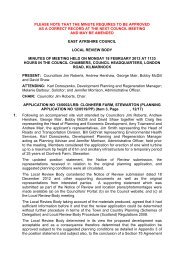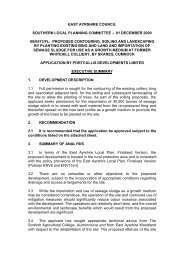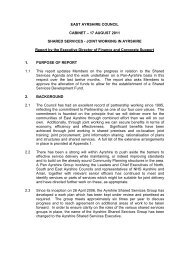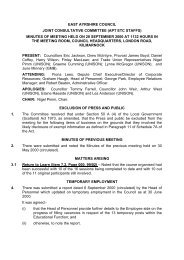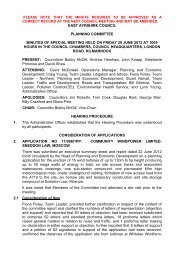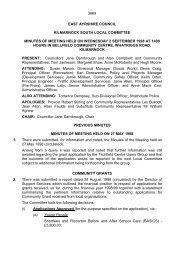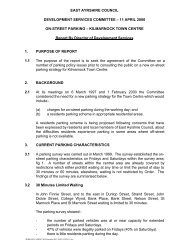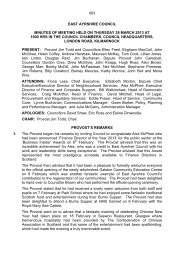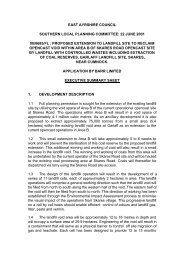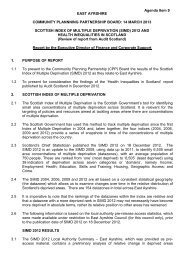Child Protection Procedures - East Ayrshire Council
Child Protection Procedures - East Ayrshire Council
Child Protection Procedures - East Ayrshire Council
Create successful ePaper yourself
Turn your PDF publications into a flip-book with our unique Google optimized e-Paper software.
(b)<br />
(c)<br />
(d)<br />
(e)<br />
No explanation of the injury.<br />
Delay in reporting the injury or in seeking treatment.<br />
Bruising on the young infant or less mobile child.<br />
Reports of recurrent injuries which only occur in one situation with one carer in<br />
particular.<br />
Examples of Injuries in Cases of Physical Abuse<br />
Injuries to the Skin and Subcutaneous Tissue<br />
Most common – in the form of bruises and skin marks. Multiple bruises in various<br />
stages of healing is a characteristic sign. The following list includes areas of the body<br />
where abuse-related injuries are most common.<br />
(a)<br />
(b)<br />
(c)<br />
(d)<br />
(e)<br />
Head, ears, cheeks, mouth.<br />
Chest, stomach, upper arms.<br />
Thighs and buttocks.<br />
Lips or gums.<br />
Genital or rectal area.<br />
Finger Marks require considerable force: they may be caused by a:<br />
(a)<br />
(b)<br />
(c)<br />
Slap<br />
Pinch<br />
Grasp<br />
Bite Marks and Scratches<br />
Human bite marks are usually distinctive as a circle of two discontinuous semi-circles<br />
corresponding to the upper and lower teeth. There is usually no central bruising<br />
although this area may be swollen.<br />
Black Eyes<br />
Two black eyes are rarely accidental, and even a single black eye is of serious<br />
concern in the immobile child.<br />
Accidental black eyes are often accompanied by bruises to other parts of the face,<br />
such as the forehead or the bridge of the nose.<br />
125



